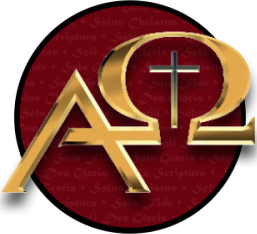As the name suggests, the Eclectic school differs from the various defenders of the Byzantine text in that it does not, at least in general, favor any one particular text type. Rather, the Eclectics select the readings that fit their accepted criteria for determining the original wording of a particular passage, regardless (for the most part) of the readings textual family.
There are essentially two opinions that differ from one another with regard to Eclectic methodology: Thoroughgoing, or Rational Eclecticism, and Reasoned Eclecticism. Both are of the opinion that the original readings of the New Testament can be determined from the extant manuscripts, and that reading is found scattered among the various extant manuscripts. They differ on their approach to the manuscripts. In this installment of our Textual Criticism series, we will look at the “Thoroughgoing Eclecticism” position.
Thoroughgoing Eclecticism, also known as Rational Eclecticism and Radical Eclecticism, is by no means a widely held position. One of its main proponents is J. K. Elliott, whose article on the subject forms the basis for this presentation (J. K. Elliott, “The Case for Thoroughgoing Eclecticism,” in David Alan Black (ed.), Rethinking New Testament Criticism, (Grand Rapids, Mi: Baker Academic, 2002), pp. 102-125) believes that while those who explicitly take this view may be few, many unknowingly adopt its practice in the course of commentary on the New Testament text. It is of interest to this study, however, since it is a viewpoint radically different from the various Byzantine text positions (the historical-documentary approach) and also distinct from the more popular Reasoned Eclectic viewpoint (the cult of the best manuscript approach, according to Elliott.
The main distinguishing feature of the Thoroughgoing Eclectic position is that it strongly favors the use of internal evidence to assess the value of any given reading. This is not to say that it disregards external evidence, such as the age of the manuscripts, or their geographical location, but it considers these to be secondary considerations. There is no pre-determined view of the manuscript traditions; there are no favored manuscripts or text types. When faced with a collection of textual variants, the Thoroughgoing Eclectic will want to determine which best fits the style and theology of the author, not which comes from the best quality manuscripts, or which follows a particular textual tradition.
A definition of the movement I defend here is that we do indeed seek to achieve a knowledge of readings over and above a knowledge of documents. We start our work from a full apparatus criticus… and we pay attention not only to the reading but at a later stage to the attestation as well. (Elliot, p. 104)
The principles of textual criticism applied by Elliott and those who share this view agree to a great extent with those of most, if not all, Eclectic textual critics, at least in terms of internal evidence. Such principles include the famous difficilior lecto potior, or the principle that the most difficult reading is to be preferred, the recognition of a scribal tendency to conflate readings and assimilate parallel passages, the effects of scribal frailty (paleographical considerations) such as homoeoteleuton, and the effect of church controversy upon the transmission of the text. Where Elliott believes that his Reasoned Eclectic brethren err is not that they fail to apply these principles, but they fail to apply them consistently. He laments the fact that while they will faithfully apply the principles to one reading in one case, in another case they will jettison them when the better reading disagrees with one of the favored manuscripts (principally B and Aleph). Elliott cites Mark 3:32; 6:23, 41; and 7:4 as examples of this kind of behavior. In each of these passages, the readings adopted in the Nestle-Aland text are those of manuscripts other than B or Aleph. However, in each case they have put the B-Aleph reading in the main body of the text in square brackets, as if to say that while this reading may not be original, it ought to stand in the text on the merit of the manuscripts alone. In Elliott’s view, this is a classic example of the cult of the best manuscripts.
The Thoroughgoing Eclectic applies these principles to every variant reading in every case, regardless of manuscript tradition. Elliott illustrates this extensively by applying the principles to a number of passages and describing the process by which the Thoroughgoing Eclectic determines the correct reading, or at least showing how one can better achieve a determination by applying this methodology. Some of his treatments of textual issues are worthy of note. For example, there is a variant in Mark 1:4 where the reading could be either VIwa,nnhj o` bapti,zwn or VIwa,nnhj bapti,zwn. Does Mark introduce John as the Baptizer, or does he simply indicate that John came baptizing? The Nestle-Aland and UBS texts put the definite article (o`) in square brackets, indicating that the committee is undecided. Elliott correctly notes that B and Aleph are split on this particular variant. For Elliott, though, the matter is relatively simple. The title bapti,zwn was used by later writers, and so, assuming Marcan priority, (which, interestingly, Elliott does without qualification) the verbal form with the definite article is probably correct. Also, since this is at the beginning of Mark’s Gospel, it is likely that he would introduce John by name: the Baptizer. Another good example is Elliott’s treatment of Mark 10:1. Here, Mark’s use of o;cloi is in question. According to Elliott, manuscripts D and Q have the reading o;cloj which he believes to be more in line with Marcan style. Out of 40 instances of this word meaning crowd, this is the only place where the modern critical editions have the word in its plural form in Mark’s Gospel. While the singular form of the word is not well attested, Elliott accepts it on this basis, suggesting that the plural form was a scribal change to harmonize this passage with Matthew 19:1.
In Hebrew 2:9, the writer speaks of Jesus’ humiliation on the cross where “by the grace of God He might taste death for everyone” (NASB). There is a variant reading at this point where some manuscripts read “apart from God” (cwri.j qeou/) in place of “by the grace of God” (ca,riti qeou/). Since the reading “apart from God” is not as well attested as “by the grace of God,” it is presumed that the former came about as a result of either a scribe misreading the word, or the accidental inclusion of a marginal gloss. Elliott notes that while the former reading seems to lack support, Origen says that it was in many manuscripts of his day. Also, since this is the more difficult reading, it ought to be given due consideration. Finally, he contends that, from the point of view of doctrinal history, this reading fits first century views of Christs separation with God on the cross. He presumes the text was changed as a result of fifth century Christological disputes where it could be used to imply that Christs divine nature did not suffer. It should be pointed out that this is, of course, Elliott’s interpretation of first century views, and even if these were first century views, he would be hard-pressed to demonstrate that the New Testament writers shared such views. A good case can be made for Jesus’ cry of dereliction on the cross being simply a means of drawing attention to the fulfillment of Psalm 22 in the events of Calvary.
From these examples it should be clear that the Thoroughgoing Eclectic view is far more interested in issues of style, context, and theology than it is in issues of text types and dates. While Elliott is firm in his conviction that the readings are more important than the documents, he will admit that his methodology can be used to suggest manuscripts that ought to be treated with some suspicion. He suggests that if a certain manuscript consistently produces readings that run contrary to the recognized style and theology of the author, that manuscript will be considered less trustworthy (Elliott, pp. 122-123). On the other hand, if a solid reading comes up (and by “solid” I presume he means that the reading in question fulfills the criteria for internal evidence at least within the passage in question) that appears to contradict the recognized style and theology of the author, one must be prepared to accept this as an exception to the rule and explain its existence.
In response to the criticism that this approach does not account for the history of the text and does not provide for any continuity in the textual tradition, Elliott responds that the Thoroughgoing Eclectic approach is alert to the historical context of the passage in question, both in terms of church history, and the development of Christian doctrine. This perspective also accounts for theological disputes occurring in the church at the time that the various manuscripts would have been produced, as well as popular literary movements that may have affected the text, such as the Atticism of the second century.
Thoroughgoing Eclecticism, therefore, is an approach to textual criticism that is eclectic in that it does not start with a particular manuscript or textual family, but it presumes that the original readings are to be found within the broad spectrum of manuscripts and variants. It is thoroughgoing in that, at least in the opinion of those who hold this position, it applies the standard by which readings are evaluated consistently with each and every reading, regardless of text type, and regardless of other external factors.
Part 12: “Eclectic Text” Positions: Reasoned Eclecticism–coming soon…



